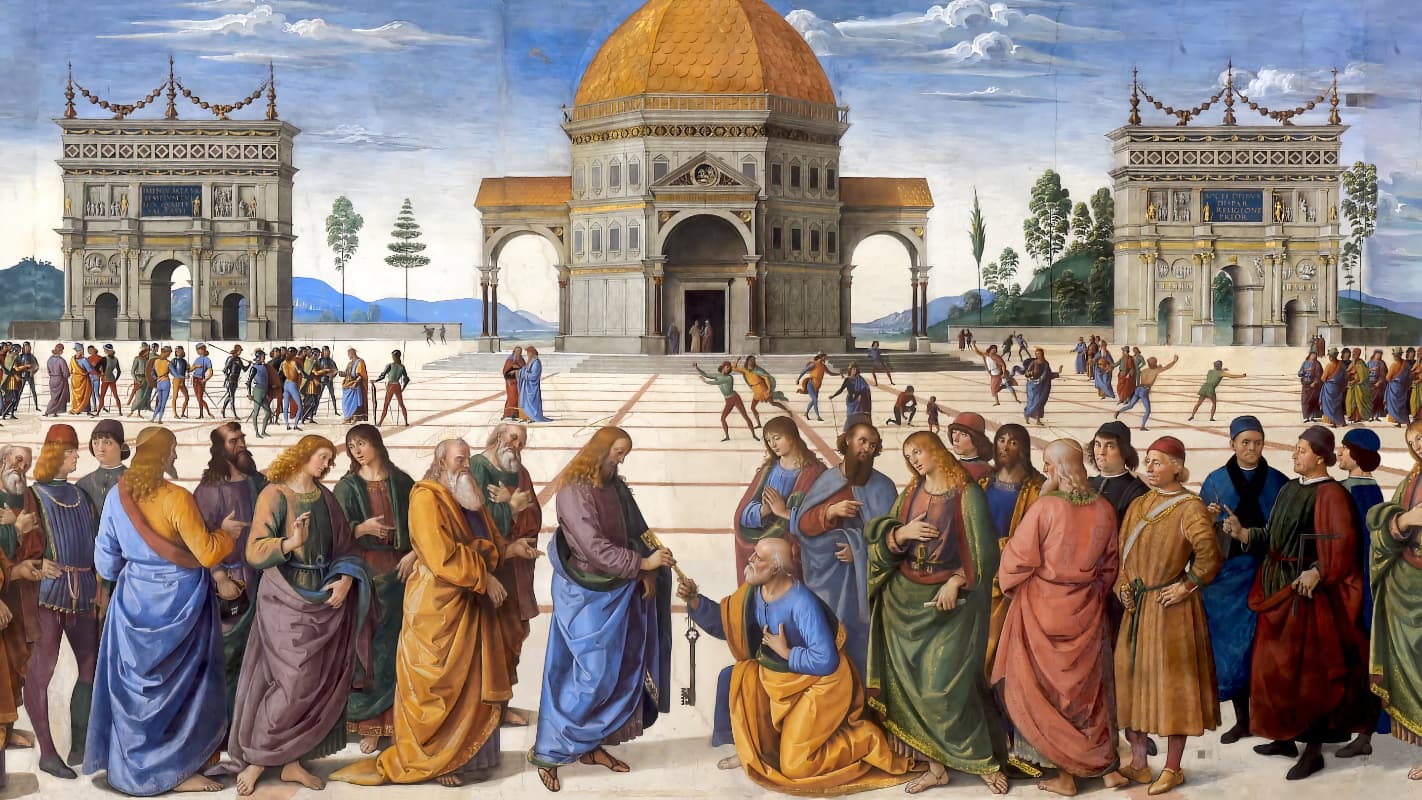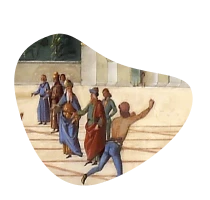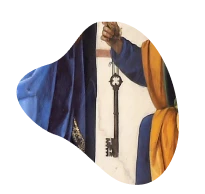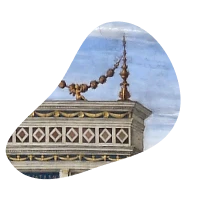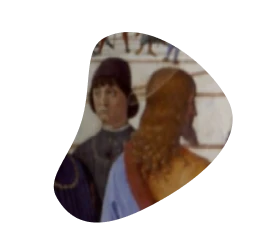He had worked for kings, dukes, and popes; he had traveled the courts of Milan, Aix-en-Provence, Ferrara, Rome, and Paris. And yet at the end of his life, Josquin retired from the hustle and bustle of European court life to a comfortable position in his hometown, Condé-sur-l’Escaut. Perhaps he had wearied of running from the plague; perhaps he had had enough of court politics; perhaps he just wanted to go home.
In his will, he left a provision for his Pater Noster to be performed on his death day by a church choir in procession outside his house in perpetuity. But what is perpetuity? Where Josquin’s home once stood there is now a carpark; nobody sings his Pater Noster there anymore. But legacy about is more than a provision for an annual memorial.

With their 2022 performance of Josquin’s complete masses at the Pierre Boulez Saal, The Tallis Scholars and Peter Phillips have shown that his music can command full houses and standing ovations to this day. But it also left its mark on the composers who came afterwards. Karim Said points out that Johannes Brahms linked many later composers back to Josquin: “Brahms’s interest in Josquin is well documented, and the Second Viennese School’s interest in what we sort of broadly call early music is also well documented. You could say that it actually started with Brahms who was interested in medieval rhythmic modes, and all the rhythmic diversity he has in his own music comes from that—when he uses hemiolas, for example, which is setting two against three. And think of the different traditions that the second Viennese School draws on upon—a hexachord, in the end, is quite similar in concept to a tone row.”

Thai composer Prach Boondiskulchok first encountered Josquin’s music as a 16-year-old studying counterpoint: “It was before YouTube existed, so I had to go to Surrey University to find CDs. And I listened to Missa La sol fa re mi, which was a transformative experience. I remember just being really moved by the sense of proportion; there’s always a sense of human scale.” For his recent choral commission The Work, Boondiskulchok was directly inspired by Josquin’s setting of Latin texts as a cantus firmus.
While he views Josquin’s music as belonging squarely to the European tradition, American composer and social activist Anthony R. Green believes that there is a way to contextualize it in a setting bigger than the Europe of the time. Like Boondiskulchok, Green first encountered Josquin’s music whilst studying counterpoint: “I remember just marveling at the way he could manipulate both rhythm and melody, to create these fantastic journeys. Even at the time, I think what he was creating was unique. And I would say that my very first impression of Josquin was one of sheer beauty.”
We hope that you'll keep listening to Josquin and keep discovering things we didn't know before
Yet it was only recently, says Green, that he learned of Afro-Portuguese composer Vicente Lusitano, born in 1520, the year before Josquin died. “I feel as though there are plenty other non-white European musicians or mixed musicians who were working at that time, whose stories are completely lost. So it’s up to us as scholars to do what we can to try to uncover these stories and see how they influence life and composition at that time. And I think we can do that with regards to Josquin scholarship. If we don’t, we lose the complete picture of music history. It’s just a really big task.”
We’ve come to the end of our journey in Josquin’s footsteps. There have been wars and plagues and misattributions along the way; but through it all, there has been Josquin’s incredible legacy, a body of work that stands as vividly today as it did when he wrote it half a millennium ago.
We hope that you’ll keep listening to Josquin, and keep discovering things we didn’t know before; and we hope that The Tallis Scholars will perform all 18 masses again one day.
Master of the Notes is a Max Music Media production commissioned by the Pierre Boulez Saal and written by Shirley Apthorp and Willem Bruls.
Born in South Africa, Shirley Apthorp grew up in Australia and studied music at the University of Tasmania. Since 1996, she has lived in Berlin, writing about music for numerous international publications including the Financial Times (UK), Bloomberg (USA), and Opernwelt. Her work has been published in the United Kingdom, the U.S., Australia, Germany, Austria, Japan, Brazil, the Netherlands, Norway, and South Africa. In 2010, she founded the award-winning non-profit organization Umculo which supports social development through music theater in South Africa. Shirley Apthorp received the Classical:NEXT Innovation Award in 2019.
Willem Bruls holds degrees in literature and history of art and works as dramaturge, author, music critic, and librettist. He has published extensively on a wide range of subjects, including most notably a study of Wagner’s Ring cycle and orientalism in opera. He collaborated with directors such as Guy Cassiers and Pierre Audi and directed several music theater productions himself. He wrote a stage adaptation of Pasolini’s Teorema for the Ruhrtriennale Festival and has given workshops on contemporary music theater, libretto writing, and youth theater throughout Europe. He serves as an advisor for the performing arts to the Dutch Arts Council.
Credits
Original Music for this podcast was composed by Karim Said and recorded by Angela Boutros, Elias Aboud, Roshanak Rafani, and Joseph Protze of the Barenboim-Said Akademie.
Excerpts from Josquin des Prez, Pater Noster, recorded by Cinquecento © Hyperion Records Ltd., London.
Excerpts from Josquin des Prez, Missa L'homme armé super voces musicales, recorded by Peter Phillips & The Tallis Scholars © Gimell Records.
In case of violation of copyright, we kindly ask the rightsholders to contact us.
